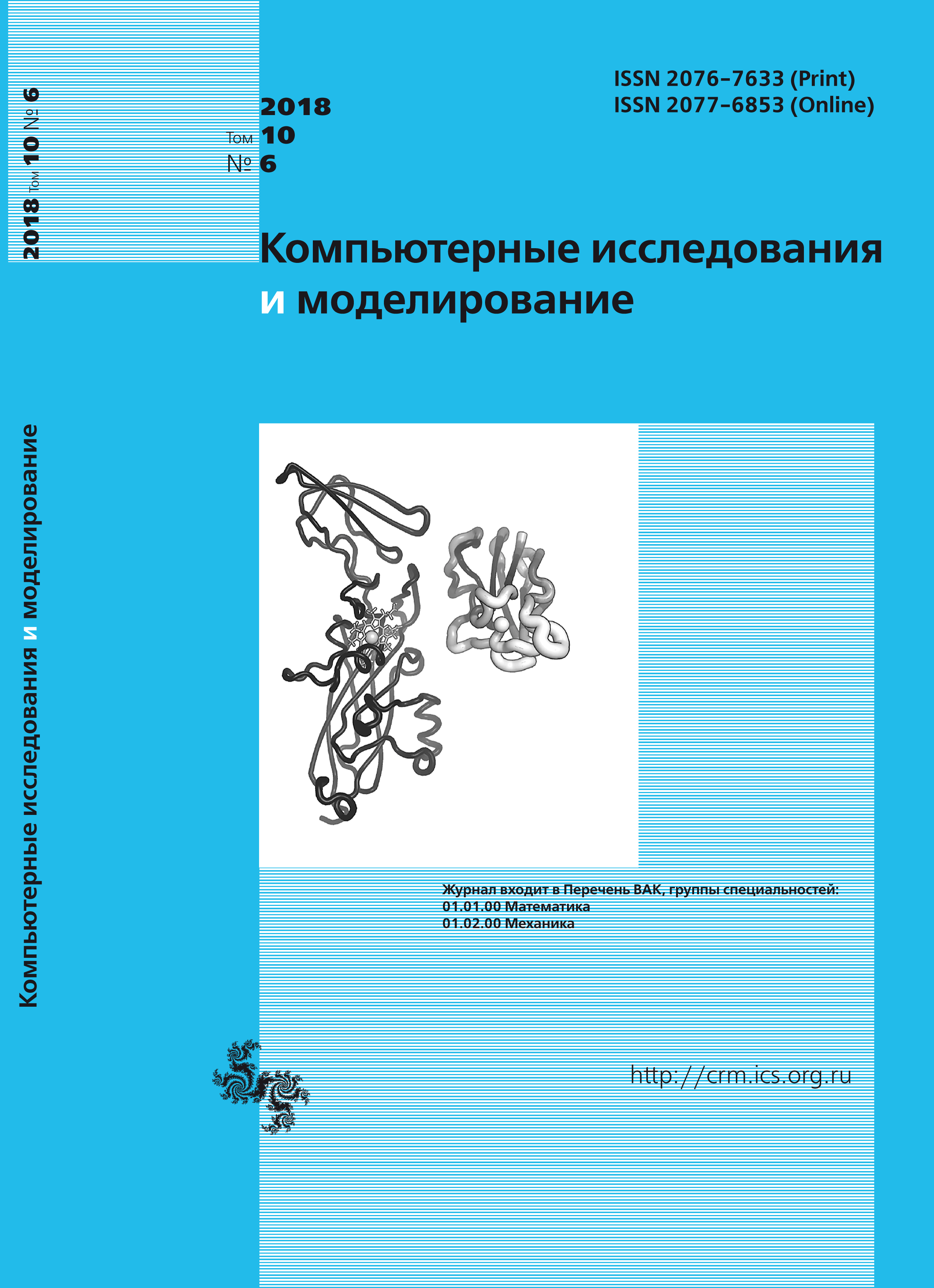All issues
- 2025 Vol. 17
- 2024 Vol. 16
- 2023 Vol. 15
- 2022 Vol. 14
- 2021 Vol. 13
- 2020 Vol. 12
- 2019 Vol. 11
- 2018 Vol. 10
- 2017 Vol. 9
- 2016 Vol. 8
- 2015 Vol. 7
- 2014 Vol. 6
- 2013 Vol. 5
- 2012 Vol. 4
- 2011 Vol. 3
- 2010 Vol. 2
- 2009 Vol. 1
Mathematical modeling of carcinoma growth with a dynamic change in the phenotype of cells
In this paper, we proposed a two-dimensional chemo-mechanical model of the growth of invasive carcinoma in epithelial tissue. Each cell is modeled by an elastic polygon, changing its shape and size under the influence of pressure forces acting from the tissue. The average size and shape of the cells have been calibrated on the basis of experimental data. The model allows to describe the dynamic deformations in epithelial tissue as a collective evolution of cells interacting through the exchange of mechanical and chemical signals. The general direction of tumor growth is controlled by a pre-established linear gradient of nutrient concentration. Growth and deformation of the tissue occurs due to the mechanisms of cell division and intercalation. We assume that carcinoma has a heterogeneous structure made up of cells of different phenotypes that perform various functions in the tumor. The main parameter that determines the phenotype of a cell is the degree of its adhesion to the adjacent cells. Three main phenotypes of cancer cells are distinguished: the epithelial (E) phenotype is represented by internal tumor cells, the mesenchymal (M) phenotype is represented by single cells and the intermediate phenotype is represented by the frontal tumor cells. We assume also that the phenotype of each cell under certain conditions can change dynamically due to epithelial-mesenchymal (EM) and inverse (ME) transitions. As for normal cells, we define the main E-phenotype, which is represented by ordinary cells with strong adhesion to each other. In addition, the normal cells that are adjacent to the tumor undergo a forced EM-transition and form an M-phenotype of healthy cells. Numerical simulations have shown that, depending on the values of the control parameters as well as a combination of possible phenotypes of healthy and cancer cells, the evolution of the tumor can result in a variety of cancer structures reflecting the self-organization of tumor cells of different phenotypes. We compare the structures obtained numerically with the morphological structures revealed in clinical studies of breast carcinoma: trabecular, solid, tubular, alveolar and discrete tumor structures with ameboid migration. The possible scenario of morphogenesis for each structure is discussed. We describe also the metastatic process during which a single cancer cell of ameboid phenotype moves due to intercalation in healthy epithelial tissue, then divides and undergoes a ME transition with the appearance of a secondary tumor.
Copyright © 2018 Krasnyakov I.V., Bratsun D.A., Pismen L.M.
Views (last year): 46.Indexed in Scopus
Full-text version of the journal is also available on the web site of the scientific electronic library eLIBRARY.RU
The journal is included in the Russian Science Citation Index
The journal is included in the RSCI
International Interdisciplinary Conference "Mathematics. Computing. Education"







